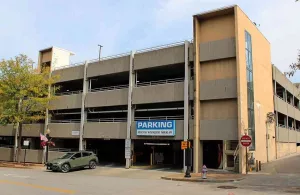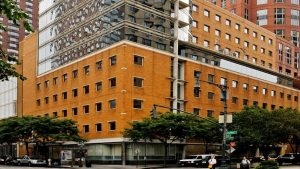Hilco apologizes for ‘anxiety and fear’ after Little Village demolition amid coronavirus pandemic
Published by John on
Hilco Redevelopment Partners and its demolition sub-contractors have been cited and fined, and the city will also impose a six-month moratorium on “all requests for demolition by implosion” while the process is revamped.
The old Crawford power plant, 3501 S. Pulaski Rd.
The companies responsible for the implosion of a 95-year-old smokestack have been cited and fined. The demolition, part of the redevelopment of the site of a shuttered power plant in Little Village, covered the surrounding neighborhood in dust.
Mayor Lori Lightfoot on Friday outlined sweeping changes aimed at mitigating the political fallout from the demolition of a 95-year-old smokestack at a shuttered coal-fired power plant that outraged and endangered Little Village residents. Sixteen citations with $68,000 in fines have been issued against Hilco Redevelopment Partners and its demolition sub-contractors — MCM Management Corp. and Controlled Demolition Inc. The city pulled MCM’s permit and is reviewing the company’s license. It also will impose a six-month moratorium on implosions.
But that’s just the beginning. At a City Hall news conference — her second this week on the subject — Lightfoot acknowledged what outraged Little Village residents have been saying all week.
What happened last Saturday at the site of the shuttered Crawford power plant wasn’t a case of “one bad apple” or one contractor that made safety promises it didn’t keep. It was a flawed city regulatory system desperately needing to be overhauled.
The result of the implosion “was utterly and completely unacceptable. It polluted our air and covered over six blocks of homes with coats of dust. It was unsafe. It was dangerous. And under no circumstances will that be tolerated in the city of Chicago. Especially in a time like this,” the mayor said.
“I want the residents of Little Village to know that we hear you and we understand your anger. … I’m angry, too. … Our singular mission is protecting the health and safety of you and your families. And making sure this kind of incident never, ever happens again anywhere in the city of Chicago.”
In investigating what went wrong internally, Lightfoot said she discovered it has been 15 years since the last implosion in Chicago. And despite the inherent dangers — and the need for “massive road closures” and sign-offs by at least five city agencies when explosives are used — there was “no separate, in-depth permitting process” for implosions. “Implosions using potentially dangerous materials were treated virtually the same as a standard fare demolition [by] wrecking ball. That will change,” the mayor said.
Lightfoot said she has directed Buildings Commissioner Judy Frydland, Health Commissioner Dr. Allison Arwady and others to “scour the country for best practices” on demolitions in general and implosions in particular.
The six-month moratorium on “all requests for demolition by implosion” will remain in place until the city develops a “separate, more rigorous process” for the use of explosives that reflects the inherent dangers, the mayor said.
At the very least, the Chicago Fire Department’s hazardous materials unit will be required to monitor air quality “before, during and after” an implosion, conduct a dry run beforehand with all contractors and regulatory agencies, prepare a dust mitigation plan tailored to the event and “engage in multi-lingual community outreach” long before it happens.
That’s not what happened in Little Village. Area residents were notified just a day or two before the demolition that covered the community in dust, making it difficult to breathe during a coronavirus pandemic that does the same, In addition, City Hall is “reviewing all demolitions scheduled for the next 60 days to determine what projects can be postponed” during the statewide stay-at-home order triggered by the coronavirus pandemic.
Preliminary results from both dust and air samples taken from the surrounding area after the implosion have so far confirmed no asbestos was emitted from last Saturday’s smoke stack demolition. That’s consistent with Hilco’s claims about asbestos remediation before the implosion.
The Department of Public Health also collected dust samples wiped from 14 car windshields positioned north, south and west of the site and tested four air samples and found “no particulate matter in the air.” Nevertheless, Lightfoot said the so-called “honor system” is over.
No longer will developers be allowed to “self-certify” that all asbestos removal has been done in accordance with plans authorized by the city. City Hall will hire its own senior environmental inspector to verify that asbestos has been removed, the mayor said.
Kim Wasserman, executive director of the Little Village Environmental Justice Organization, called the mayor’s response “too little, too late.”
“She is not listening to what the community is asking her for. … She is only looking to point the finger at Hilco,” Wasserman said. “She also didn’t talk about the tax break — the $19.7 million that the city and county gave Hilco. Where does that stand? And where is the conversation about them vacating the property? Those are very clear demands that our community had [made] to her office.”
Asked for comment, Hilco released a statement from CEO Roberto Perez: “We will continue to fully cooperate with the City of Chicago and will be implementing all of the remediation efforts that have been requested. The health, safety and welfare of the Little Village community is of paramount concern to us as we work toward completing this project.”
Chicago Sun times




